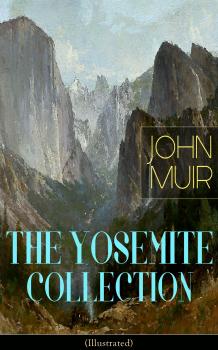ТОП просматриваемых книг сайта:
John Muir
Список книг автора John MuirАннотация
Scottish-born naturalist and writer John Muir undertook a daring adventure in 1867, just a few years after the Civil War. After recovering from an injury at a saw mill, Muir decided that he wanted to explore the world. He left his life in Indiana and walked one thousand miles to Florida. Without any real direction or purpose other than to study the flora and fauna, Muir trekked south through Kentucky, Tennessee, North Carolina, Georgia, and Florida with little more than a map, a compass, a brush, soap, and a change of underclothes. He slept under the open stars when he couldn't find a family to take him in, and sometimes Muir walked for forty miles without having food. Though Muir had planned to sail to South America at the end of his journey, he contracted malaria and instead headed to California, where he would ultimately spend the majority of his life. «A Thousand-Mile Walk to the Gulf» is a classic naturalist text set against the backdrop of the post civil war south.
Аннотация
‘When I was a child in Scotland, I was fond of everything that was wild, and all my life I've been growing fonder and fonder of wild places and wild creatures.’
John Muir was eleven when he and his family left Scotland in 1849 to build a new life on a homestead in the vast wilderness of Wisconsin. Written in simple yet beautiful prose, we see Muir’s delight as he discovers and observes the landscape and wildlife around him as he recalls his childhood and reveals himself as a master of natural description.
John Muir was eleven when he and his family left Scotland in 1849 to build a new life on a homestead in the vast wilderness of Wisconsin. Written in simple yet beautiful prose, we see Muir’s delight as he discovers and observes the landscape and wildlife around him as he recalls his childhood and reveals himself as a master of natural description.
Аннотация
The name of John Muir has come to stand for the protection of wild land and wilderness in both America and Britain. Born in Dunbar in the east of Scotland in 1838, Muir is famed as the father of American conservation, and as the first person to promote the idea of National Parks. Combining acute observation with a sense of inner discovery, Muir's writings of his travels through some of the greatest landscapes on Earth, including the Carolinas, Florida, Alaska and those lands which were to become the great National Parks of Yosemite and the Sierra Valley, raise an awareness of nature to a spiritual dimension. These journals provide a unique marriage of scientific survey of natural history with lyrical and often amusing anecdotes, retaining a freshness, intensity and brutal honesty which will amaze the modern reader. This collection, including the never-before-published Stickeen, presents the finest of Muir's writings, and imparts a rounded portrait of a man whose generosity, passion, discipline and vision are an inspiration to this day.
Аннотация
John Muir agreed in 1881 to sail aboard the Corwin, whose fruitless mission it was to search for the missing scientific research vessel Jeannette, which itself became icebound while exploring the distant and mysterious Wrangell Land in the higher latitudes of the Arctic. This cruise would afford Muir the opportunity to examine evidence of glaciation along the arctic coastlines of Siberia and Alaska and the harmonious lifestyle of Inuits and Chukchis, which was in the midst of disruption from the intrusions of the civilized South.
Аннотация
Аннотация
This comprehensive eBook presents the complete works or all the significant works – the Œuvre – of this famous and brilliant writer in one ebook – easy-to-read and easy-to-navigate: • My First Summer in the Sierra • Travels in Alaska • The Yosemite • The Mountains of California • Steep Trails • Stickeen • Two Old FaithsJ. Murray Mitchell and William Muir • The Story of My Boyhood and Youth • Alaska Days with Samual Hall Young • The Grand Cañon of the Colorado • The Character of the British EmpireRamsay Muir • The Yosemite • Cruise of the Revenue-Steamer Corwin in Alaska and the N.W. Arctic Ocean in: Botanical Notes • The Expansion of Europe; The Culmination of Modern History










